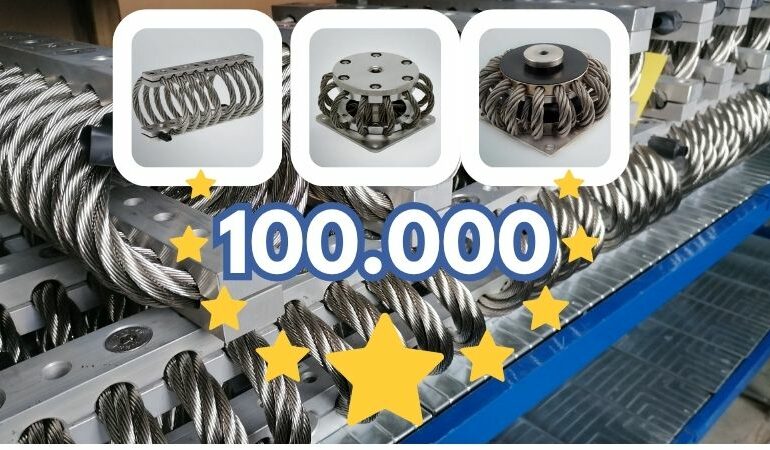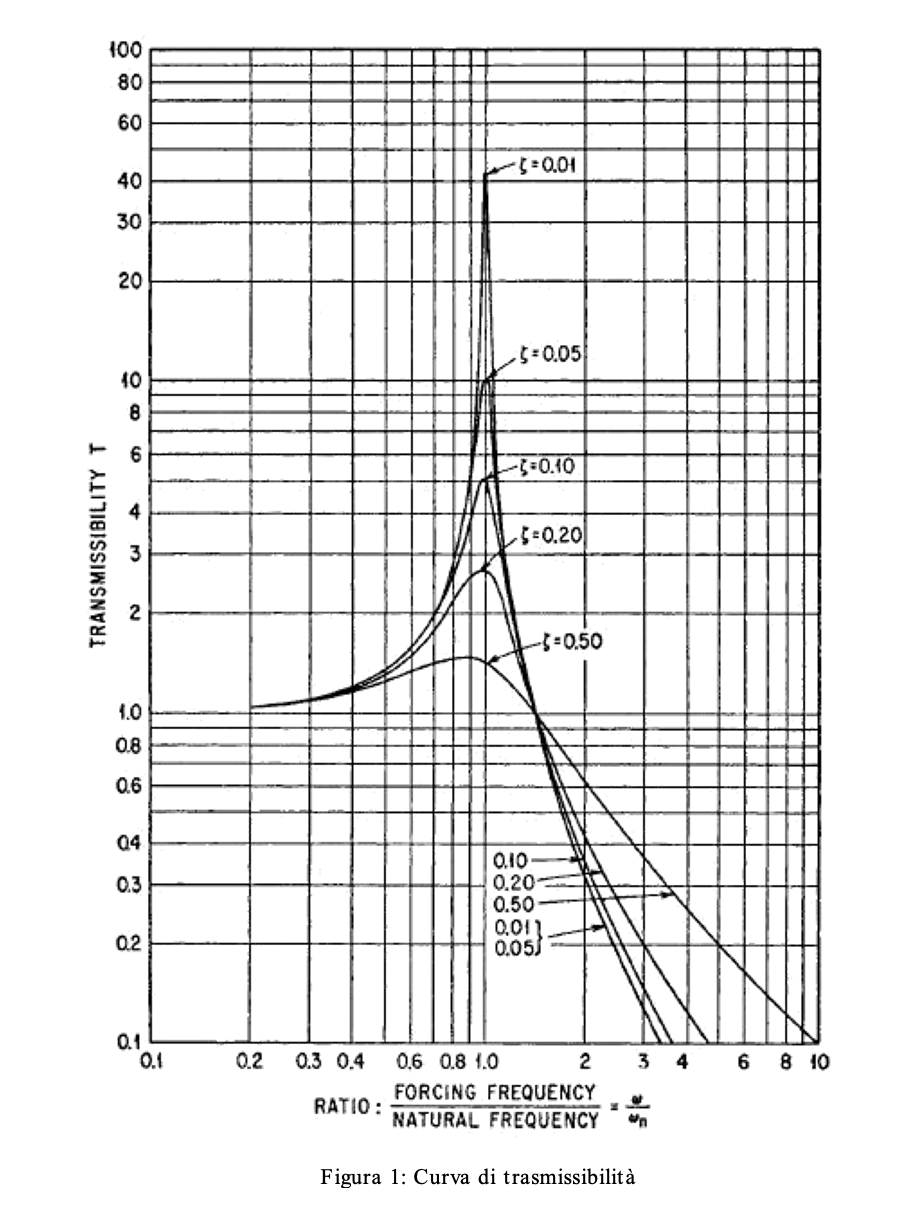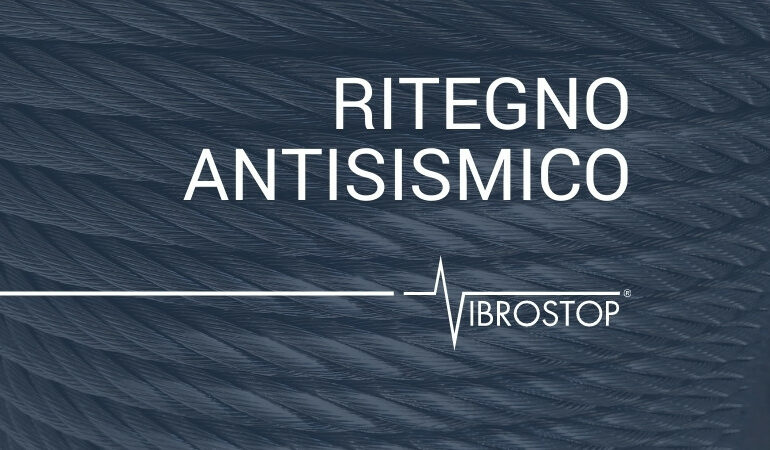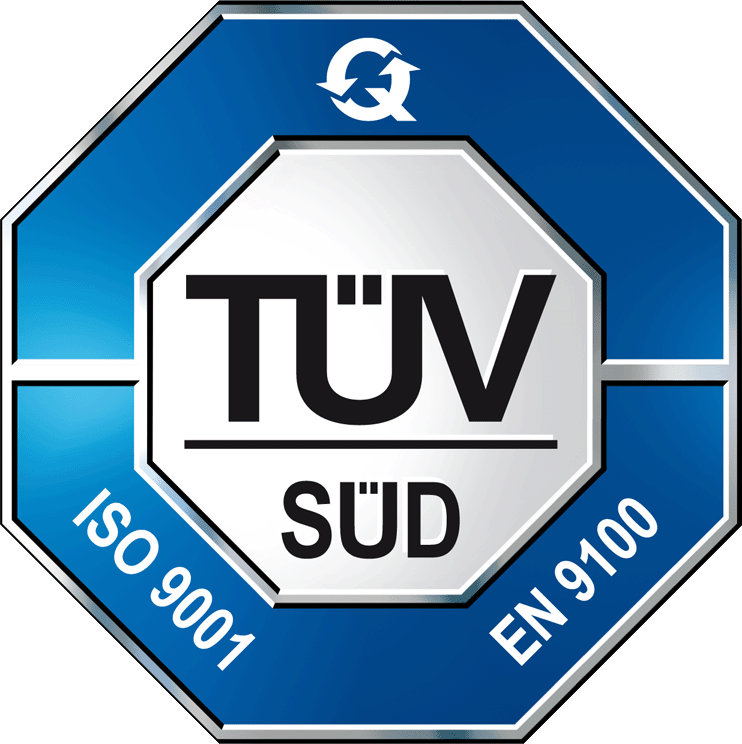
Anti-vibration mounts with anti-seismic retention
Introduction
The main purpose of this brief discussion is to provide the principles that guide the selection of anti-vibration mounts, used for the isolation of systems or parts thereof, in those cases where seismic stress must also be considered. This also implies providing clarification to an erroneous but very common concept, namely that there are anti-vibration mounts used for the insulation of systems which, like the structural ones used in the construction field, are capable of attenuating seismic accelerations. In this text, there is no in-depth analysis relating to seismic stresses or to the calculation methods and related formulas that must be evaluated for compliance with the various international anti-seismic codes.
The selection of anti-vibration mounts
The primary need is the same as for the selections for isolation from vibrations, produced by the equipment or the environment external to it, or to “cut” the medium / high frequency excitations typical of these spectra (25 ÷ 50H z) . At the same time, the main requirement common to all international anti-seismic codes must be met, namely that the resistance of the mechanical constraint must be guaranteed, during and after the seismic event.
During the earthquake, in almost all cases, the anti-vibration support responds in resonance to the earthquake. This involves an amplification of accelerations and displacements, with a factor of 2 ÷ 10 times. Seismic excitation has a spectrum with greater amplitudes at low frequencies (2 ÷ 10 H z).
With a mechanical mass-spring-damper system (with 1 degree of freedom), the isolation of a certain portion of the spectrum is obtained by positioning the natural frequency at low / very low frequency. This is achieved by appropriately selecting the stiffness of the anti-vibration support. However, it is also necessary that the frame / structure of the insulated mass be very rigid in each orthogonal direction, so that the e ective mass of the 1st mode of the system, once mounted on the anti-vibration supports, is equal to almost all the suspended equipment. . If this were not the case, we would find ourselves in the presence of higher modes with significant mass participation.
The choice of anti-vibration mounts is obtained from the transmissibility curve, the shape of which
typical is visible in Figure 1 – taken from Harris’s Shock and Vibration Handbook, 5th edition (2002), compared with the spectra of excitations, both for normal conditions
exercise for both the earthquake.
This curve highlights the presence of two zones in the frequency range, with opposite effects from the point of view of isolation or amplification of the stress:
1. Excitations with frequencies lower than √ 2 times the natural frequency are amplified
2. excitations with frequencies higher than √ 2 times the natural frequency are attenuated.
Also note the different damping weight in these two areas:
1.In the amplification zone, an increase in damping corresponds to an e ect
beneficial with the reduction of amplification
2.In the attenuation zone, an increase in damping corresponds to an e ect
negative with the reduction of insulation.
Although in the following discussion the damping will be taken into consideration as a selection / sizing parameter, it is, in reality, not available since it is an intrinsic characteristic of the series of anti-vibration mounts, practically fixed when the stiffness and load capacities vary.
Tornando ai concetti appena espressi, la scelta dei parametri dinamici (rigidezza, smorzamente e corsa disponibile, che sarà trattata in dettaglio di seguito), deve tener conto di richieste contrastanti:
• per ottenere un taglio e cace delle tipiche vibrazioni in condizioni normali di esercizio (oltre i 25 Hz), occorrono basse frequenze proprie e bassi valori di smorzamento
• per evitare o, perlomeno, limitare l’eccitazione di risonanza in risposta al sisma,
occorrono frequenze proprie più elevate (per cercare un disaccoppiamento maggiore) e smorzamenti più elevati, così da contenere il fattore di amplificazione.
Va comunque osservato che, per rendere e caci sistemi ad alto smorzamento, sono necessari elevati spostamenti. Sebbene spostamenti di ampiezza elevata sono certamente collegati ad eventi sismici, si deve però tenere sotto controllo lo spostamento massimo e verificare che esso non sia superiore a quello disponibile del supporto antivibrante.
Eccedere tale disponibilità comporta urti di fine corsa che, oltre che problemi potenziali di resistenza strutturale, potrebbero introdurre eccitazioni ad alta frequenza. Esse possono essere minimizzate evitando la presenza di fine corsa di tipo rigido.
Tutto considerato, è consigliabile, in termini generali, selezionare supporti antivibranti
che realizzino una sospensione con frequenza propria maggiore di 10 Hz, salvo il caso
in cui i supporti non abbiano smorzamento critico maggiore del 20% (tipo quelli a fune
metallica), in quanto essi garantiscono un’amplificazione di risonanza inferiore a 3 volte. Da valutare attentamente, in tutti i casi, che la corsa disponibile sia compatibile con i massimi spostamenti attesi.

Author: Ing. William Prina
Other News


Vibrostop supports the neighborhood: The Diabolik Wall



